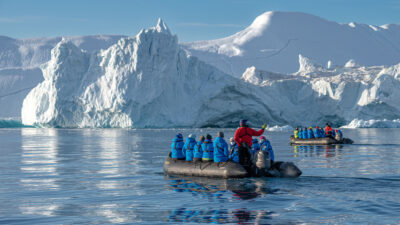There were occasional disruptions. In 1867, United States officials, fresh off purchasing Alaska, proposed to buy Greenland. No dice. In 1931, Norway claimed Greenland’s northeast coast, but was rebuffed in international court. In 1940, the Nazis occupied Denmark and attacked Greenlandic weather stations, so the island became a temporary U.S. protectorate. And of course, in 2019, under Trump, the U.S. again proposed to buy Greenland. Still no dice.
Greenland wasn’t and isn’t for sale. Indeed, nowadays it isn’t something you can sell, any more than Canada could sell Québec or Australia could sell Tasmania. In 1953, Greenland had been “upgraded” from a colony to a Danish county. Then, in 1979, inspired by the fall of colonialism across Asia and Africa, Greenlanders voted overwhelmingly for autonomous home rule. They won their own parliament, the Inatsisartut in Nuuk, raised their own flag, named their island Kalaallit Nunaat (land of the Kalaallit people), and took charge of a range of domestic matters, including education, health, fisheries, and the environment. Flexing this newfound freedom, in 1985 they ditched the European Union—Kalexit, perhaps we could call it.


















